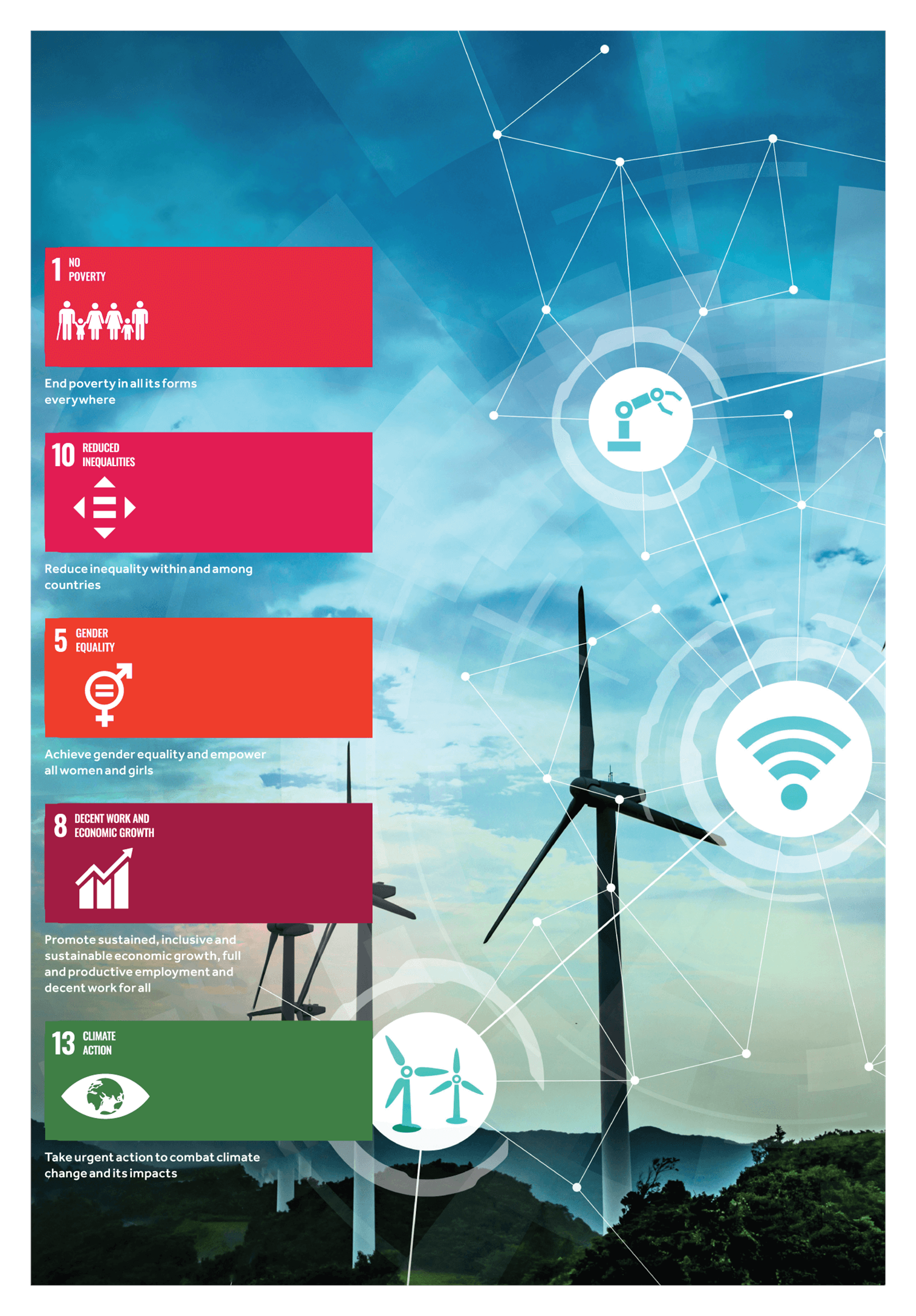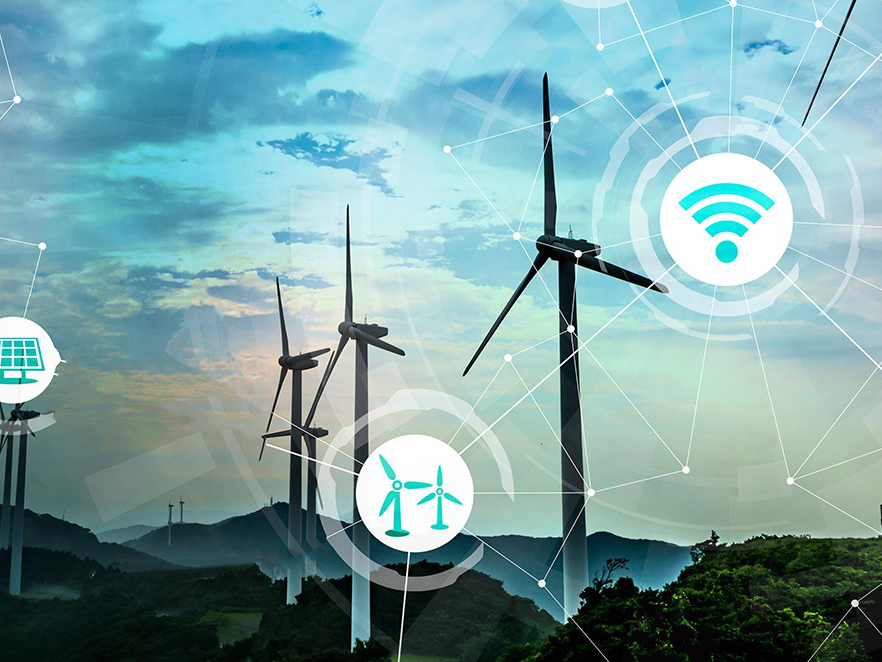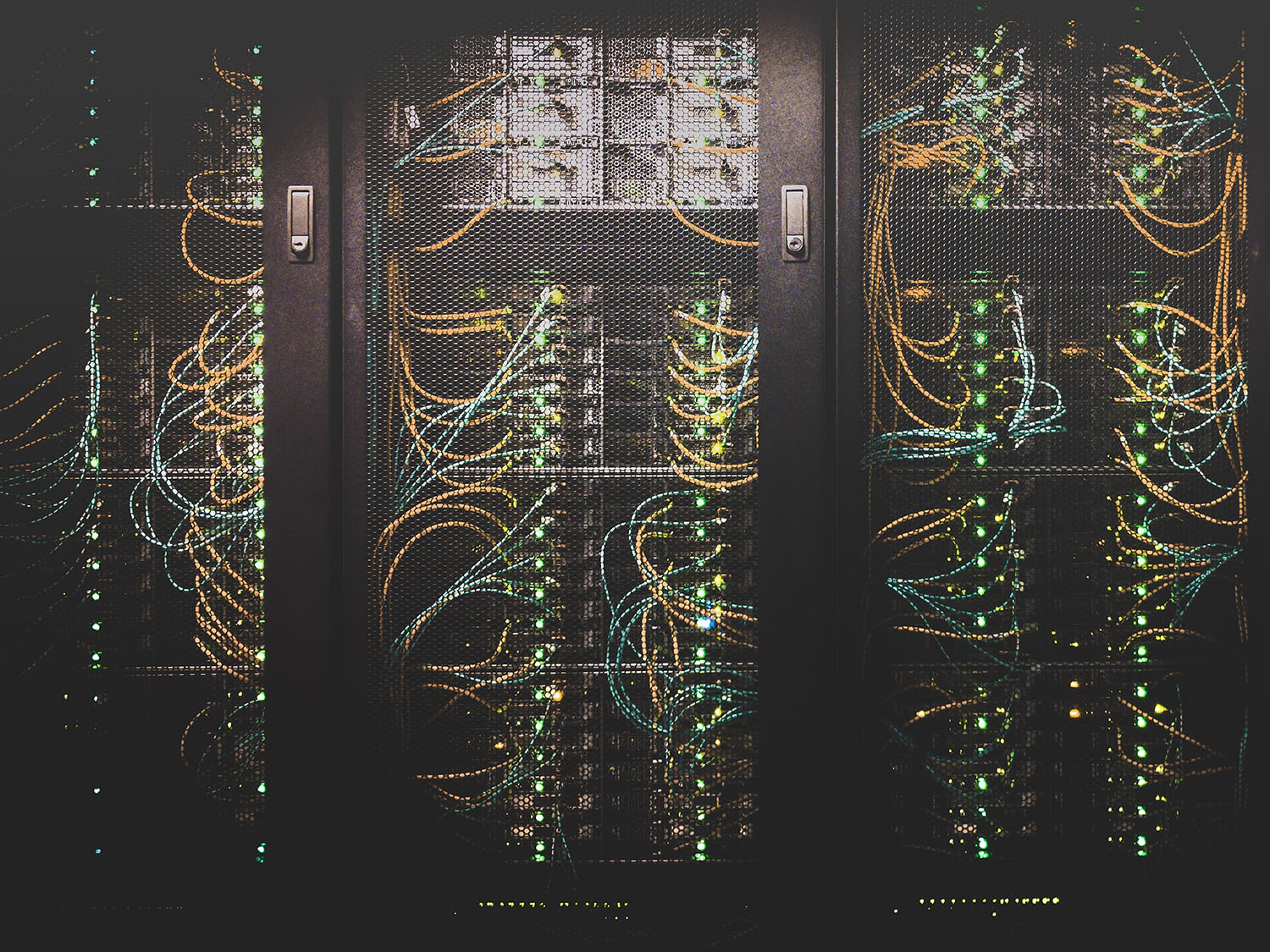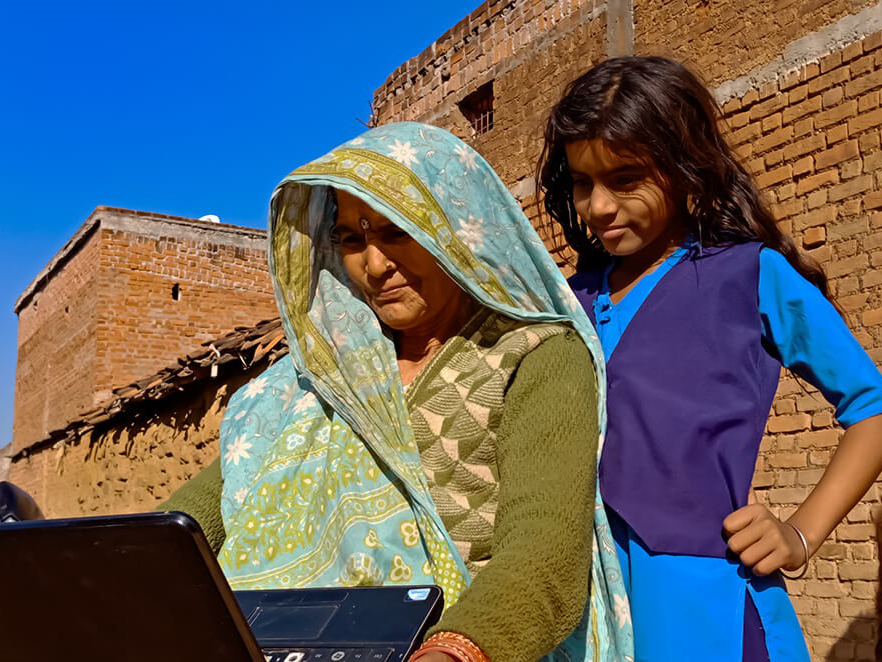Digital infrastructure has emerged as the fourth utility and today is as fundamental to raising standards of living as traditional utilities like water and electricity.
According to the International Telecommunication Union (ITU), almost half of the world’s population do not have access to the internet, with access rates significantly lower in the developing world than in developed nations.
If the digital revolution is to become as significant as others that have shaped our world today, then we need to establish an inclusive and equitable pathway to digitalisation that also considers our need to decarbonise.
Sustainability is key to unlocking shared value when investing in digital infrastructure, especially in markets where the digital divide is greater. Otherwise, we risk exacerbating the very socioeconomic inequalities and environmental challenges that the United Nations Sustainable Development Goals (UN SDGs) aim to tackle by 2030.
The digital divide
COVID-19 has accelerated the digital revolution, firmly establishing digital as core infrastructure that enables economies and people to prosper. However, the socioeconomic impacts of the digital divide were underscored by the pandemic.
In many developing markets, connectivity rates are poor and reliance on overseas infrastructure increases latency. Broadband costs are also typically higher in low-income countries, with a monthly broadband subscription costing approximately 12% of gross national income – substantially higher than the UN target of less than 2% by 2025, according to the World Economic Forum.
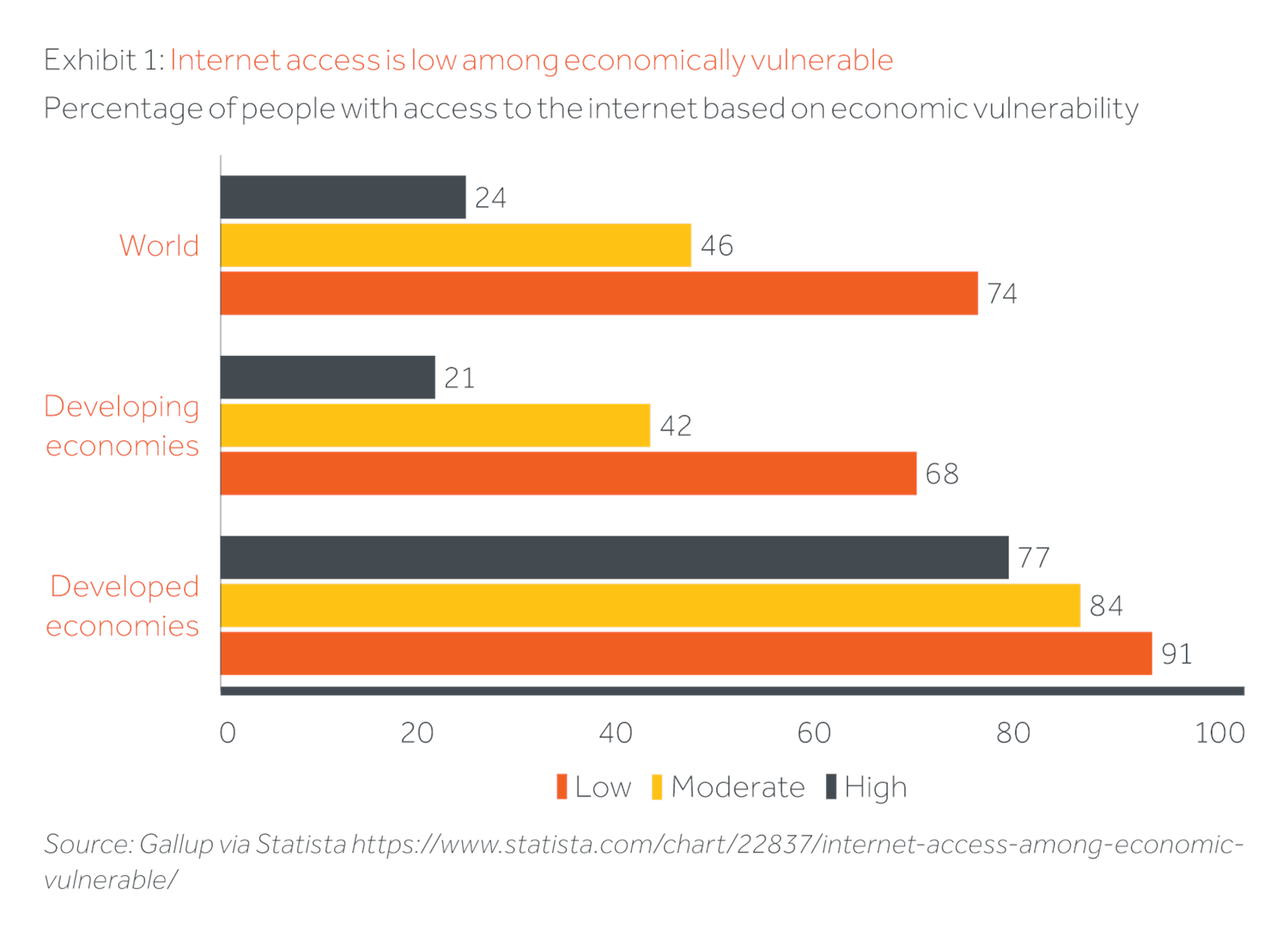
Millions are therefore precluded from access to the digital infrastructure required for social services such as education, finance, and healthcare, as well as from remote working environments.
This dynamic has left those who are not connected more vulnerable to the impacts of the pandemic, reinforcing social inequalities, and restricting economic activity. Undeniably, there is an economic cost to the digital divide (see Exhibit 1).
“Digital is also considered as central to progressing the UN SDGs’ targets for climate change”
Digital inclusion enabling social impact
Localisation of digital infrastructure contributes to economic development through reduced operating costs for businesses, attracting more commercial activity around areas where infrastructure is built out, whilst boosting productivity through reducing latency. In addition onshoring aligns to growth in data sovereignty laws and improves balance of payments.
These create positive indirect impacts through job creation, productivity, and reduced inequality levels, which all help to cultivate long-term sustainable development.
Globally, it is estimated that a 10% increase in mobile broadband penetration can yield a 1.5% increase in GDP per capita, according to the ITU.
This economic impact is even greater in developing countries, with research showing that in Africa, the same increase would yield a 2.5% increase in GDP per capita (see Exhibit 2).
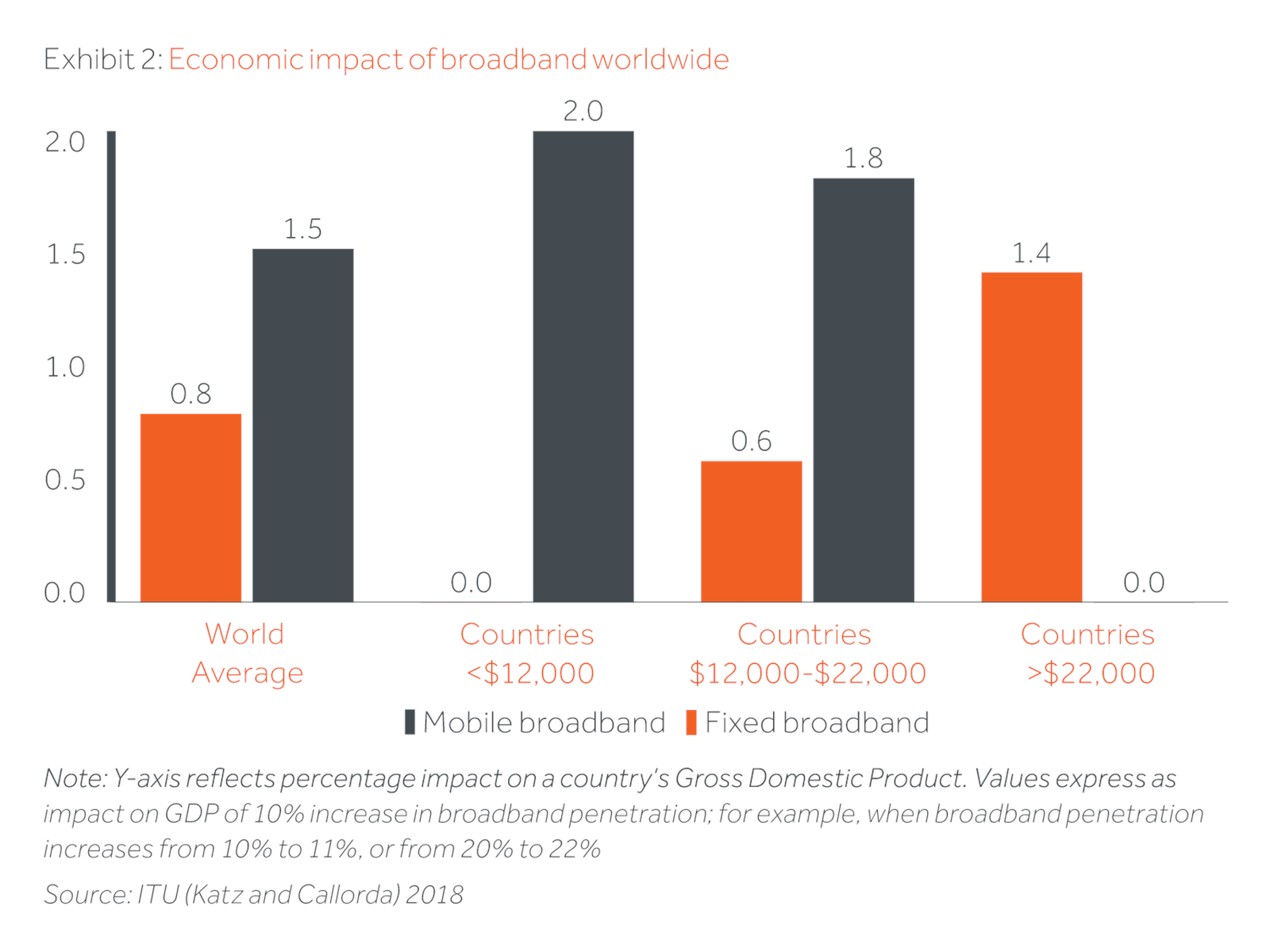
However, connectivity does not necessarily correlate with market penetration – in fact, in less developed markets, usage often remains low even when there is network coverage.
The World Economic Forum estimate that 40% of the world’s population living within the range of a mobile signal are not able to make use of it, with digital literacy being the main barrier.
Basic education also plays a role in preventing better adoption rates, and so building digital skills as well as ensuring that people have the basic education required to learn these skills. This is key to enabling the digital economy and in turn improving livelihoods (see Exhibit 3).
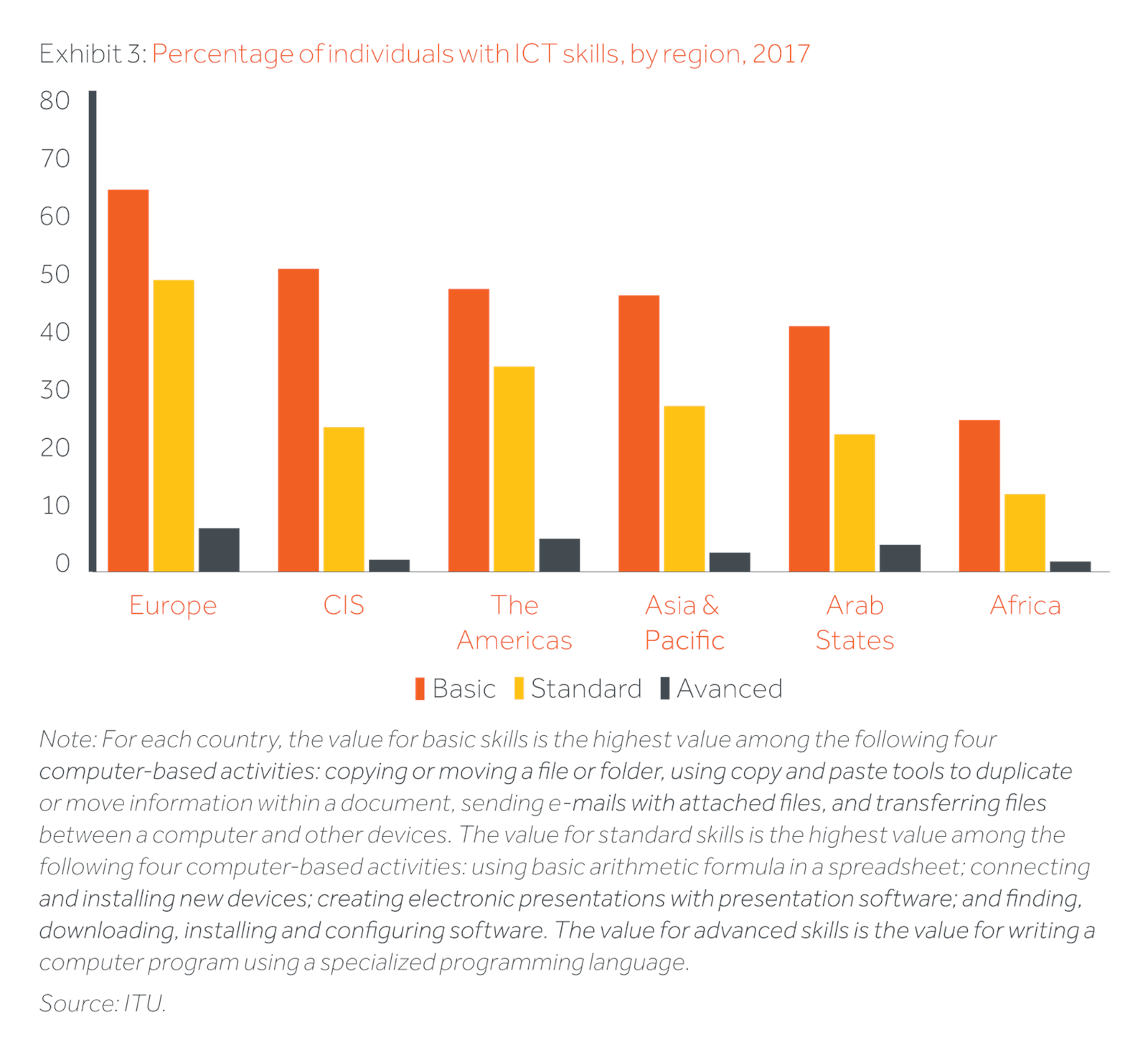
Research has also shown that within the challenge of universal digital access, there is a gender divide. Worldwide, the latest data from the ITU estimates that there is a gender gap of 7% in male and female internet access. This divide is again greatest in the least developed countries where it reaches 13%, with Africa being the most affected region at 17%. Women therefore face greater threat to their health, wellbeing, and economic prosperity if digital inclusion does not include a targeted gender component.
“Women face greater threat to their health, wellbeing, and economic prosperity if digital inclusion does not include a targeted gender component”
Against this backdrop is an opportunity for digital infrastructure to progress a number of the UN SDGs; Ending poverty (SDG 1), reducing inequalities (SDG 10), gender equality (SDG 5), and decent work and economic growth (SDG 8) are some of the primary social goals that it can address. Alongside this, digital is also considered as central to progressing the UN SDGs’ targets for climate change.
A critical enabler of the low-carbon transition
The global momentum behind climate action (SDG 13) has created a tailwind for digital infrastructure, with digitally-enabled energy efficiency technologies – such as smart grids, 5G, and the “Internet of Things” – playing an important role in the transition to a net zero economy. The World Economic Forum estimate that digital technologies could help reduce global carbon emissions by up to 15% by 2030 in line with the goals of the Paris Agreement. Targeting carbon efficiencies in the digital sector (responsible for 1.4% of global emissions, according to the journal article, ‘The Energy and Carbon Footprint of the Global ICT and E&M Sectors 2010 – 2015’, in the journal ‘Sustainability 2018’) will be key to limit global warming as the sector expands in the coming decades.
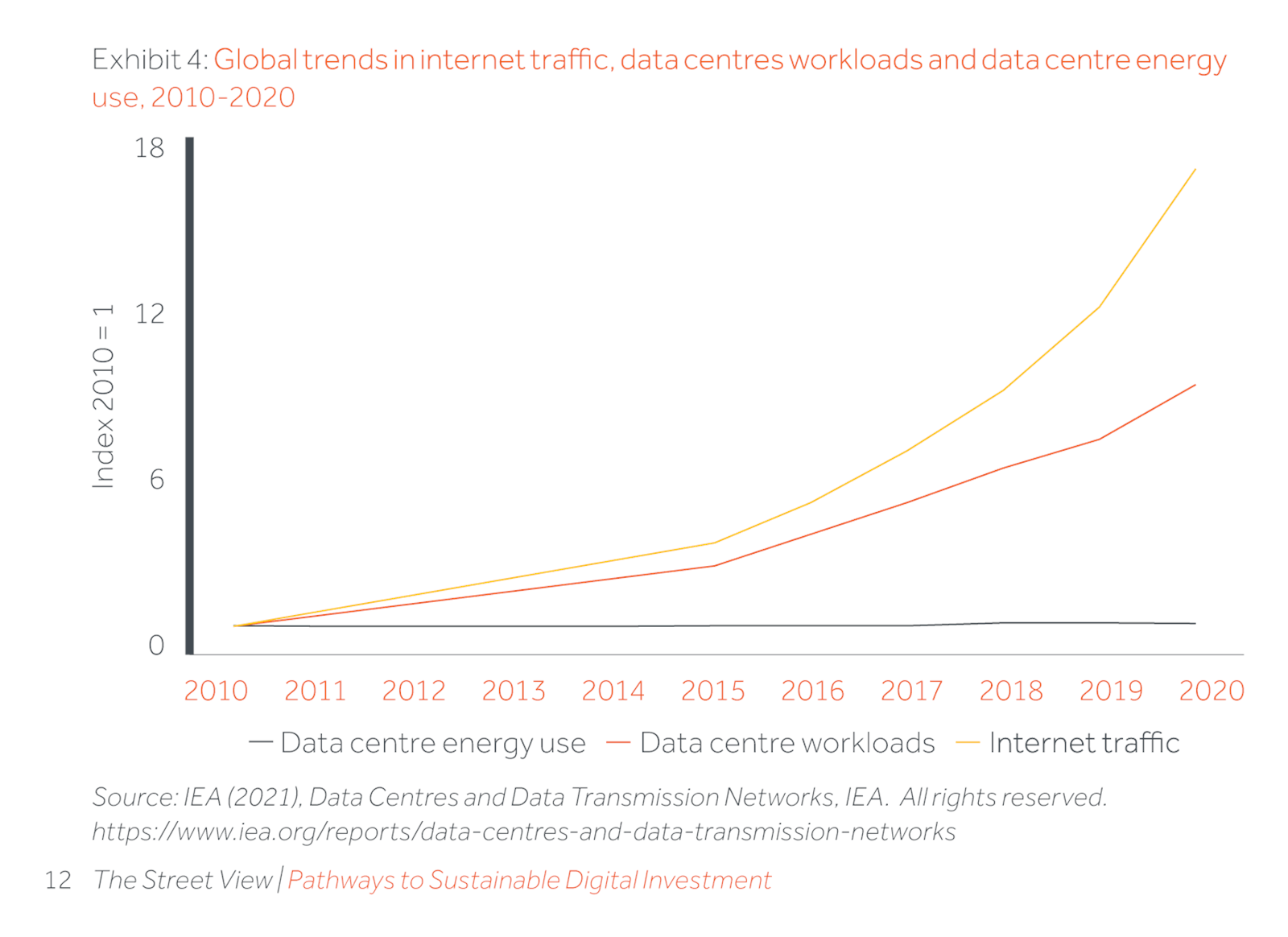
Energy efficiency gains and computing advances in data centres over the past decade shows how carbon emissions increase can successfully be decoupled from digital sector growth.
Data centre energy use has remained flat since 2010 despite exponential growth in the demand for digital services – with the number of internet users worldwide doubling, and a growth of 15-fold (or around 30% per year according to the International Energy Agency (IEA)) in internet traffic, occurring over the same period (see Exhibit 4).
The trend towards colocation and hyperscale data centres, which have much lower power usage effectiveness (PUE) than smaller data centres, has helped to enable this. In addition, targeting top tier PUE in the design of data centres can make them up to 70% – 90% more energy efficient to operate than individual servers hosted on-site.
The IEA reports that data centres account for approximately 1% of total global electricity demand. The top hyperscale corporate off-takers such as Google, Facebook, Microsoft, and Amazon have all set ambitious decarbonisation targets, helping to grow the market for renewables-powered data centres.
As a result, we are seeing more capital flow to build data centres in markets where renewables form a greater proportion of the grid energy mix or in cooler climates where power demand is lower, as well as data centre operators looking to procure renewable energy Power Purchase Agreements or build off-grid renewable energy systems.
“The World Economic Forum estimate that digital technologies could help reduce global carbon emissions by up to 15% by 2030 in line with the goals of the Paris Agreement”
With digitalisation positioned as central to the low-carbon transition, we will need to continue to seek out opportunities to deliver digital in a sustainable way.
Notably, the exponential growth in infrastructure associated with sustainable development and the low-carbon transition is placing unprecedented pressure on raw materials’ supply chains, with further environmental and social costs that need to be considered in value chains as well.
Sustainable digital infrastructure
For Actis, sustainable digital infrastructure must consider lifecycle impacts alongside design and operational efficiencies, and the local development needs of where the infrastructure is installed.
Evaluating this spectrum of environmental and social risks and opportunities is an important determinant for prioritising the high impact opportunities that can maximise shared value for digital investors and the markets that they serve.
This will be key in collectively forging a sustainable, inclusive pathway to digitalisation which truly unlocks digital’s potential to successfully deliver on the UN SDGs.
